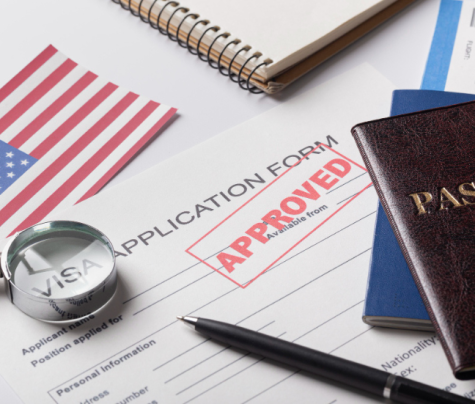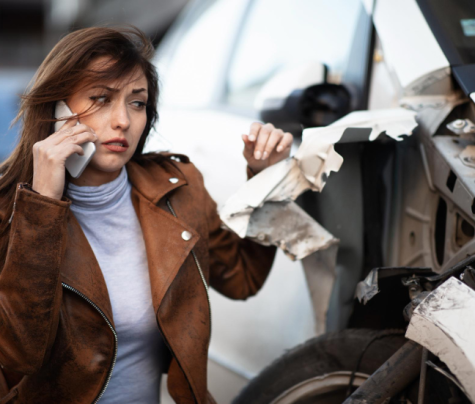
A car accident can leave you shaken, even if you walk away without any visible injuries. Many people assume they’re fine and carry on without taking proper steps, only to face issues later.
That’s why it’s essential to act quickly and carefully. Even if things seem minor, consulting with a car accident lawyer in Austin early on can help protect your rights and guide you through the next steps.
Hi, in today’s blog, we will be primarily discussing what to do after a car accident. Therefore, follow along to learn all that you can about managing a crash, even if you do not show signs of trauma.
What To Do After A Car Accident?
A car accident is not something that you can anticipate. Everyone who has been in an accident can tell you that everything happens in a fraction of a second. One single moment of carelessness, and you will end up with an injury that can last a lifetime.
In many cases, the injuries from a car accident can be invisible. They do not become apparent for days, weeks, or months after the incident. Therefore, having a prompt action plan to manage it is a great way to handle the situation.
Here are some things to consider if you have been in an accident but show no visible signs of stress or trauma.
1. Stop The Car
The foremost thing to ensure is that everyone involved in the accident is safe and secure. To ensure this, you need to stop the car as soon as the crash happens. The reason behind this is twofold. First, it is your legal obligation to stop a vehicle. Failure to do so can result in a legal battle.
Secondly, stressful situations generally lead to heightened adrenaline and stress responses. However, this reaction often tends to make a person numb to physical injuries and pain. Therefore, please stop the car and do a detailed bloodsweep of yourself and everyone involved.
Yes, it can be stressful to stop the car and coordinate these things, but you need to do it for both the legal and humanitarian obligations that you might have.
2. Check For Injury
As we have stated, you need to stop the car and do a bloodsweep. A blood sweep is just an initial way to check injuries. However, some injuries often do not show up until quite late. Hence, you need to be detailed and thorough in your approach.
While checking for injuries, start with the other car. This is a mind-game tactic that can hold up well in court. Ensure that everyone exits the vehicle and check for all forms of injuries.
Start with the head, then check the chest cavity, and finally, the legs. Follow this methodology consistently for everyone involved in the accident.
3. Get Medical Help
Once everyone is out of the car and you have completed the blood sweep and injury screening, it is your responsibility to obtain medical assistance. Many people shrug off this process, claiming that they are all right.
However, we advise against this. Get medical help for the court. After a crash, be the person who calls the paramedics. Again, these are some of the post-incident accounts that may be presented in court and could be helpful if a lawsuit arises.
Moreover, accident injuries often manifest late. Therefore, taking a professional medical screening can help you deal with the problem medically.
4. Intimate The Insurance Company
Once the medical screening is done and injuries are accounted for, it is time to manage the financial losses. For this, you need to talk to your insurance company and inform them what has happened.
The call to the insurer will not be a walk in the park. This is because an insurer will always attempt to reduce the overall compensation amount and protect its company. You are making a mistake if you think that your insurer will help you.
An insurer’s job is to pay the least amount for compensation and get the client off its back. Therefore, please be tactful and approach the situation with clarity, or let your lawyer friend handle this aspect for you.
5. File An Incident Report
Any accident can result in either of two situations: a legal fiasco or a medical issue. Both of these outcomes are problematic in their way. Therefore, if you are in an accident and want to mitigate the impact, file an incident report.
The court of law takes note of who is filing the FIR or the First Information Report. An FIR is a valid document that records the initial information of a crash in detail. Additionally, an FIR is a document that will be requested from you at every juncture.
6. Take Pictures Of The Scene Of The Accident
Video and pictorial evidence are crucial in such cases. Once the dust settles, start taking photos of the crash. This is crucial, as you will present these photos in court and to insurance companies.
While taking the photos, ensure that they are clear and have multiple-angle shots. Please take the picture from the direct accident spot to get a better shot of the crash. Also, ensure that you get the license plate of all the cars involved in a collision.
As a result, the insurance company would be unable to discredit the pictures as staged or fake.
7. Be Prepared With Legal Representation
Nobody wants a legal problem on their hands. However, a car collision often leads to such cases. Therefore, as soon as you reach home or the hospital, you should significantly amp up your legal representation.
In other words, do not let the other side be the quicker one. However, that does not mean that we are asking you to slap a lawsuit on your end.
Could It Have Been Averted? Handle The Situation With Legal Clarity
The question of what to do after a car accident is a contentious topic. While some suggest fleeing, others recommend staying and lending a hand. However, the only right thing to do is to handle the situation with legal clarity.
This means presenting everything in court in your favor and never incriminating yourself. Never take the blame or say anything out of line. This will only lead to a major problem, and you do not want that.
Read More:
- How Can a Lawyer Help with Your Insurance Claim?
- Slip and Fall Injury Lawyer in Michigan: Protect Your Rights
- Everything You Need to Know About Mesothelioma Lawyers










0 Reply
No comments yet.